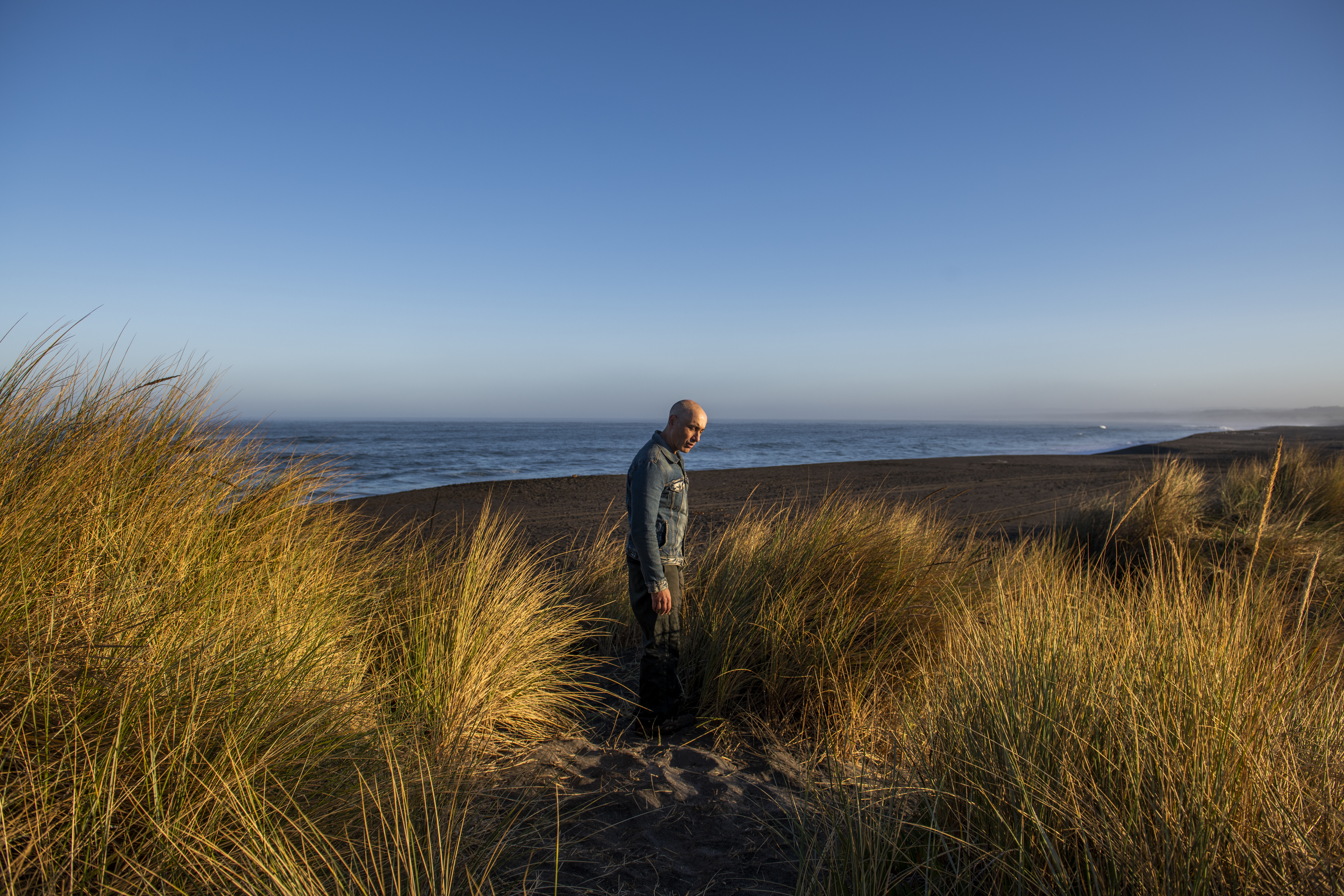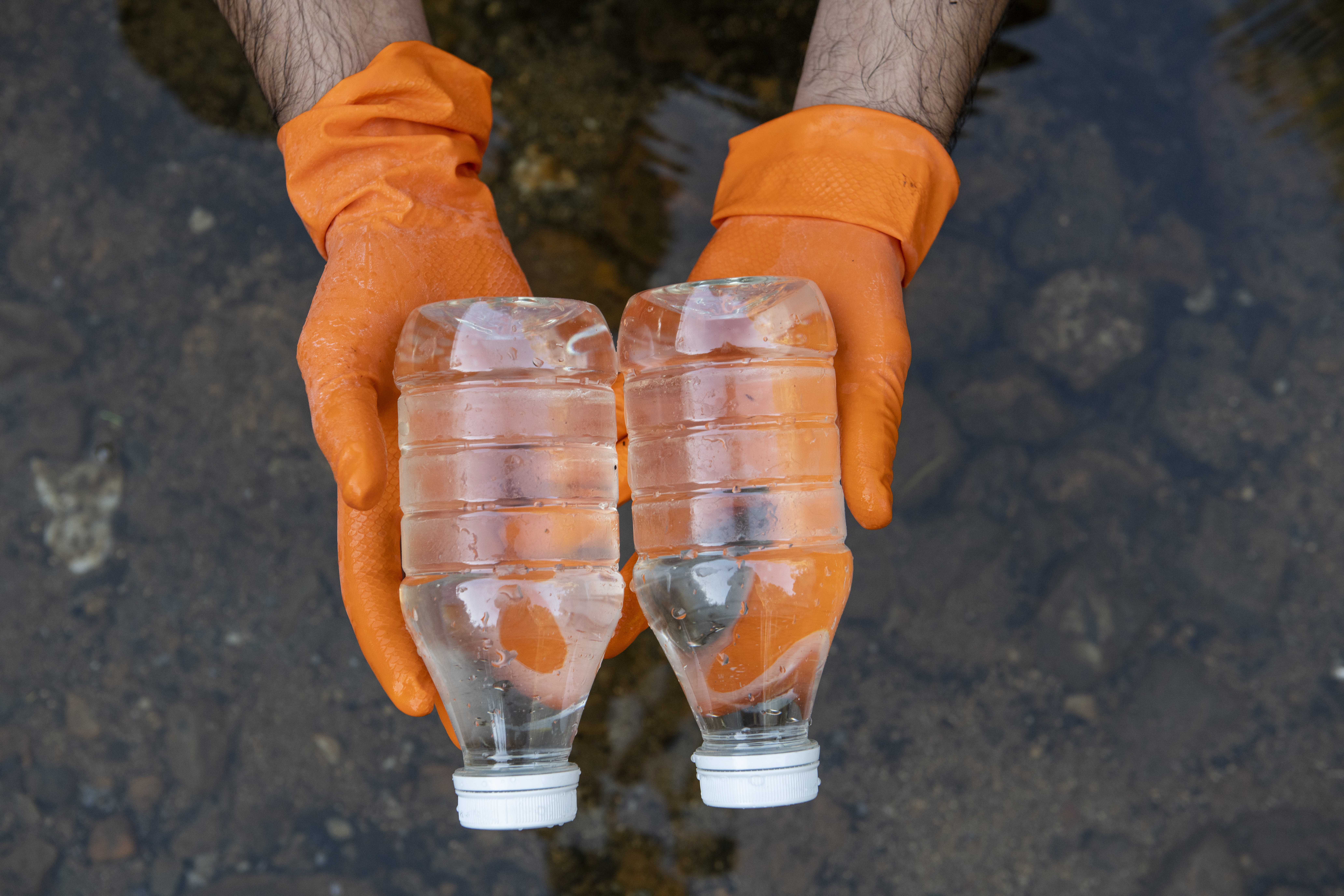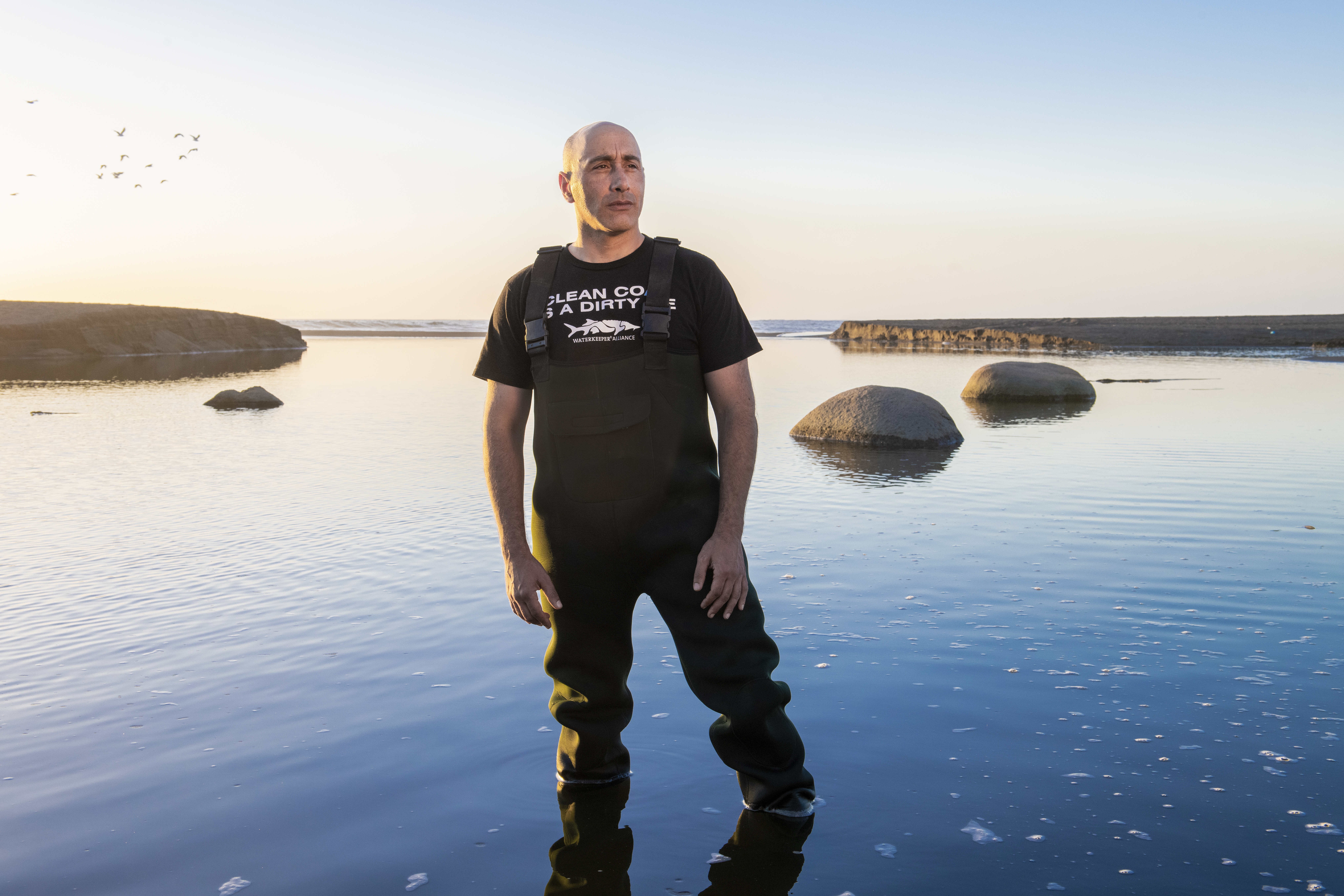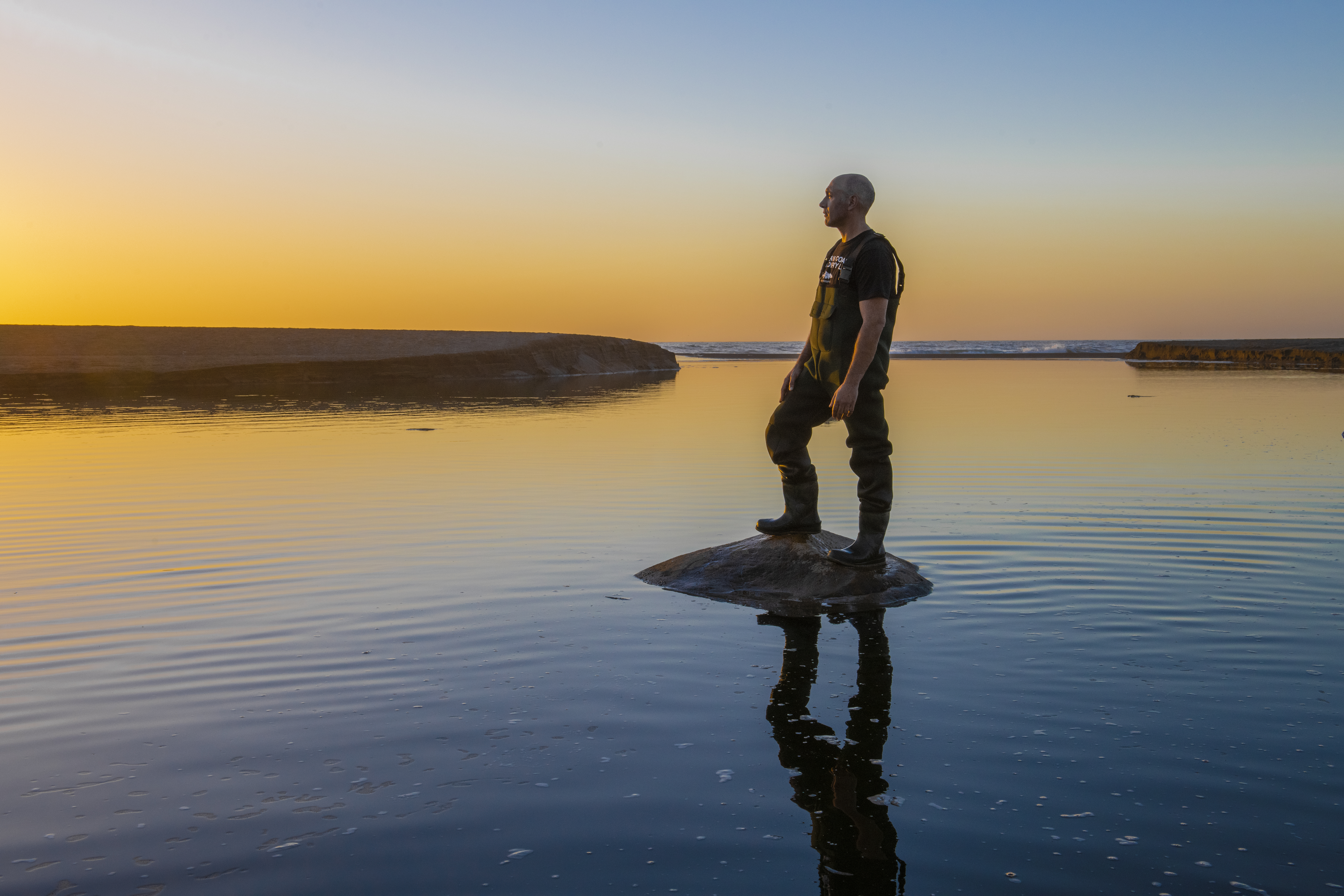Missionary for Chile’s Wild Central Coast | Rodrigo de la O, Maule Itata Coastkeeper
By: ajcarapella
Oversized coffins, massive rallies, big wins.

By Rocío Muñoz.
Photos by ©Tamara Merino, courtesy of Culture Trip.
At 3:34 a.m. on Feb. 27, 2010, a magnitude-8.8 earthquake struck Chile. The quake was so powerful that, according to NASA, it shifted the earth’s axis and shortened the day by more than a microsecond. Afterward, Global Positioning System sensors in Chile and neighboring countries recorded subtle shifts in the locations of cities, including Concepción, Chile and Buenos Aires. The tsunami that followed pummeled the Chilean coast with waves as high as 50 feet. The earthquake and tsunami killed 500 people and damaged nearly 400,000 homes.
It struck the heart of Maule Itata Coastkeeper Rodrigo de La O’s territory, and one of those thousands of destroyed homes was his grandmother’s, which he had visited every summer as a child. Fortunately, she was unhurt.
Rodrigo was out of the country when the quake hit, but within three days he had flown back on a flight the Colombian government had chartered, full of Chileans returning to the country. They couldn’t land at a commercial airport, so they landed at a Chilean Air Force base. Rodrigo had gathered relief donations from private sources, including tents, sleeping bags, and thousands of charcoal and ceramic water-filtration systems. The government had declared martial law; soldiers patrolled the streets. Rodrigo and his team initially worked hand in hand with the local government; within days Rodrigo was running emergency relief services out of his house; among other things, he taught scores of marines and sailors how to assemble the filtration systems.
In the weeks that followed, Joshua Berry, the environmental director for a nonprofit organization called “Save the Waves,” worked alongside Rodrigo 18 hours a day. The two traveled along the coast and acted as facilitators and translators for a team of medical first-responders who had flown in from California.
“We went through a war together,” Berry says.
“The fight became Rodrigo’s full-time job. He met Joshua Berry from Save the Waves, who, along with members of the Chilean environmental group Fiscalia del Medio Ambiente asked him if he knew anyone who wanted to be a Waterkeeper. Rodrigo answered, ‘Me! I want to be a Waterkeeper. Here I am.’”
Firefighters, paramedics and a doctor parked their Jeeps and set up tents in Rodrigo’s yard. Two weeks after the quake, there were seven tents in his yard and a small village of people coming in and out of his house to use his bathroom and kitchen.
“True to the Spanish saying, “mi casa es su casa’, you could come in any hour and ask for anything,” he recalls. “He was just this pillar of support. He threw open his whole life for us to come in and set up what was essentially this military operation. And he stayed calm that whole time. That’s just the way he is. He’s always cognizant of the work at hand and keeping that work going.”
ENVIRONMENTAL MISSIONARY
Rodrigo is soft-spoken and self-effacing but beneath that calm exterior you can also sense a missionary’s zeal for the environment, and a relentless commitment to spreading the gospel of clean water to remote villages along his 70-mile coastal watershed in central Chile. Sergio Moncada, Waterkeeper Alliance’s organizer for Latin America, says he’s an idealist who quietly does work of critical importance.
“Chile and the world are in critical need of more Rodrigos,” says Moncada.
Today’s destination is a modest cabin that houses the fishermen’s union in the village of Cardonal, where he’s leading a workshop about taking care of the coast and the nearby Chovellén River. Rodrigo’s four-wheel drive vehicle and the T-shirts that are his uniform are adorned with environmental slogans. Today’s shirt reads, “Clean coal is a dirty lie.”
At the meeting about 20 people, almost all women, listen, raptly. The group includes the mayor of the nearby hamlet of Pelluhue, María de la Luz Reyes. Rodrigo begins his presentation by showing a photo of a group of people washing cars with detergent beside the Chovellén River. A woman exclaims, “That water goes straight to the oyster farms!” Another photo depicts damage done by backhoes illegally removing sand and rock from the river to be used in construction. Jaws drop. This is less than one mile away from their homes.
Rodrigo answers questions and passes out brochures explaining how to file a report of an environmental violation with governmental regulators, and how to contact him. He finishes his presentation with a bang. The local government, he reports, is considering a $60 million project to build a shelter for the artisanal fishermen’s boats in nearby Curanipe, public money he feels would be better spent on replenishing fishing stocks.
Rodrigo wants to stop the planned project. Based on his history, he just might.

DAVID VS. GOLIATH
The Chilean power company AES Gener submitted plans in 2007 to build a $1.3 billion 750-megawatt coal-fired power plant 20 miles south of the seaside city of Constitución in the Maule region. The Los Robles plant would be constructed on a fault line, and Rodrigo was having none of it.
A native of Santiago, Chile’s capital, where he worked as a graphic designer and in advertising, Rodrigo and his wife moved to the Maule region in 2004, drawn by memories of summers at his grandmother’s house in nearby Curanipe. He and his wife came here with a food truck to sell sandwiches. Then he worked as an artisanal fisherman. Later, he set up his own design-and-advertising office.
“I always loved the beauty of this place,” he says. “I thought that this was a good place to live, have children, and raise a family.”
When he heard about the plans for a power plant, his first thought was, “I had worked too hard to build a life here. I was not going to allow it to be destroyed by this monstrous project.”
He began to meet informally with other residents of the area in groups of about eight or 10. He remembers that, in the early days, “people felt hopeless. They said, ‘what could we possibly do against the power of this giant corporation?’ I said, ‘No. There is everything to be done.’”
In 2008 he began to hold meetings with other local activists, who, like him, were outraged that the project had moved along without the participation of neighboring communities. They formed a team to put together an action plan, and built a coalition of concerned citizens, local businesses and politicians, and labor groups, and named it Acción Ciudadana Pro Maule Costero (Citizen Action for Coastal Maule). They started a blog that chronicled the successes and setbacks of grassroots efforts to fight the plant; they organized a 300-person march through the streets of the Talca, the region’s capital, a 400-car caravan through major roadways, and a 1,000-person march through Constitución, the region’s largest city. They gathered 12,000 signatures on a petition to stop the project.
The movement won multi-party support from key members of the national legislature; all four senators and 10 representatives from the Maule region agreed to question the regional environmental commission that had given the green light to Los Robles.
The fight became Rodrigo’s full-time job. He met Joshua Berry from Save the Waves, who, along with members of the Chilean environmental group Fiscalia Del Medio Ambiente asked him if he knew anyone who wanted to be a Waterkeeper. Rodrigo answered, “Me! I want to be a Waterkeeper. Here I am.’” And in 2009, he became the first Waterkeeper in Chile.
SOMETIMES YOU WIN
Rodrigo brought all his skills as a graphic designer to the fight against the plant.
“They all got together and built this massive coffin on the beach, a 100-foot-long coffin, representing the death of this coastline if this power plant were to be built,” Berry recalls. “It ended up being the destination for people to go to protests.”
The activists built another prop coffin, and attached a pointed message to the president of Chile: “Ms. President: It’s up to you to decide who gets buried.” When a seven-member team of legislators visited the proposed site, Acción Ciudadana photographed them next to the coffin.
The group’s success continued: In 2011 the government released a report revealing irregularities in the approval process. In 2014 Acción Ciudadana joined 30 other groups, including advocates for indigenous people, the disabled, women, and the environment, that converged in a 15,500-strong march in the streets of Santiago. The British Broadcasting Corporation called the march “a reminder of the clout that social movements have acquired in the country over the past few years, and of their willingness to scrutinize the government.”
On January 26, 2015, the permit authorizing the construction of Los Robles expired, effectively canceling the project. The newsletter EndCoal, published by an international consortium of environmental groups, wrote:
In a symbolic act, the Citizens Action for the Defense of the Maule Coast held a vigil to celebrate the death of the Los Robles coal plant after their epic seven-year struggle. They held a big bonfire that was fueled by rubble remaining from the massive 2010 earthquake and tsunami whose epicenter was located in Maule. Rodrigo de la O, convener of the Maule Itata Coastkeeper and a member of the Waterkeeper Alliance, said, “For us, it’s a special day, hard to believe, but an important, historic day without doubt. The community was organized, was active and was emphatic in defining their own development path. Our victory is due to the importance of a more empowered society that demands more space to advocate for their own interests and for the preservation of our natural heritage for future generations.”
“Rodrigo looks at the horizon of the Pacific Ocean, breathes deep and says that in 10 years, he would like Pelluhue to be a sustainable tourist destination, a marine-protected area, and a world-class surf-reserve. ‘Maybe I’m a fool, but I will continue in this.’”
“We always knew it was a long-term fight,” Rodrigo says now – David against Goliath – that we would win by refusing to give up and by wearing down the opposition, and that’s how it was.”
SALMON FARMS, THE NEW THREAT
Rodrigo’s next fight: industrial salmon farming.
Maule is located 500 miles from the salmon industry’s axis along the country’s southern coast, and Rodrigo and his allies never imagined that they too would be in the crosshairs of the industry’s powerful lobby. But in late 2015, they learned that the company Inversiones Pelicano, S.A. had filed environmental-impact declarations for a proposed $28.6 million salmon aquaculture project consisting of 11 sites along a scenic 30-mile stretch of the Maule coast between the comunas (counties) of Cobquecura, Trehuaco, and Coelemu, an area famed for surfing and ecotourism, and home to sea lions and many other charismatic species, such as the Chilean dolphin (tonina) and 60-plus feet long sei whales.
Eight of those projects would be built a mile offshore from Cobquecura and would annually produce more than 3,000 tons of salmon. The 11 sites would cover approximately 454 acres of water and include cages as deep as 200 feet.
The news of Inversiones Pelicano’s looming arrival alarmed Rodrigo and many of the locals for good reason. Salmon are not indigenous to South America, and 25 years ago, Chile had no salmon industry to speak of.
As farming of this species grew, it brought with it a host of damaging effects to coastal communities in the south. With tens of millions of salmon confined in overcrowded pens, their excess food and feces falling to the sea floor, and dozens of processing plants dumping salmon entrails directly into the ocean, it was only a matter of time before disaster struck. Soon dead zones formed in the waters around the pens. And the industry’s overuse of antibiotics – not to treat disease but to prevent it – increased the risk of antibiotic-resistant bacteria infecting local communities and salmon consumers.
Hoping to avoid the fate of communities in southern Chile, and as he did with the coal plant, Rodrigo was one of the leaders in building a coalition of environmental organizations, grassroots groups, and local residents, this one called “We Are All Cobquecura” to stop the salmon farms.
“We began an ambitious campaign so that the wider public would come to understand and value what we have,” he says, “understanding threats, risks, impacts, the possible effects of climate change.”
The group managed to stop the operations that had been proposed by Inversiones Pelicano, but the threat still stands.
“The Norwegian companies say, ‘We are going to plant salmon farms in Chile because the laws are convenient, permissive,’” Rodrigo says. “But there cannot be private investments of such magnitude by private interests that pose such dangers to public goods.”
BEING A COASTKEEPER
No vehicles are allowed on Chilean beaches, but local politicians are loathe to make enemies of fishermen, who drive on and off the beach in large vans. Rodrigo watches them, with a look in his eyes that says he’s ready to pick his next battle.
In 20 years the area has changed dramatically. Before there was only a dirt road that connected Curanipe with the nearest city. His grandmother was originally from Cauqenes, which is 27 miles away. When Rodrigo was a child, it took two days to get there from Santiago.
“It was an adventure. There was only one phone in the whole town. Now the population has increased, and a month ago a bank opened. I would never have thought of such a thing.”
Sitting on the coastal rocks, he confesses that he is not always comfortable with the name “Coastkeeper” because it make it sound like it is only one person’s job.
“The coastkeepers are also the neighbors, the organizations, the fishermen,” he says. “The whole community has to be the protagonist. There has to be real empowerment.”
As he thinks about nearby industrial towns he’s visited with Waterkeeper staff, where pollution is widespread, he’s worried industrial pollution and agricultural chemical contamination might become so commonplace that people ignore them. “I am dismayed to think that my children may be exposed to drinking or breathing heavy metals. It is not possible for children to sacrifice for the profits of others.”
Rodrigo looks at the horizon of the Pacific Ocean, breathes deep and says that in 10 years, he would like Pelluhue to be a sustainable tourist destination, a marine-protected area, and a world-class surf-reserve.
“Maybe I’m a fool,” he says. “But I will continue in this.”
Rocío Muñoz is a journalist based in Santiago, Chile. She writes about social and environmental issues and also hosts a radio show.

